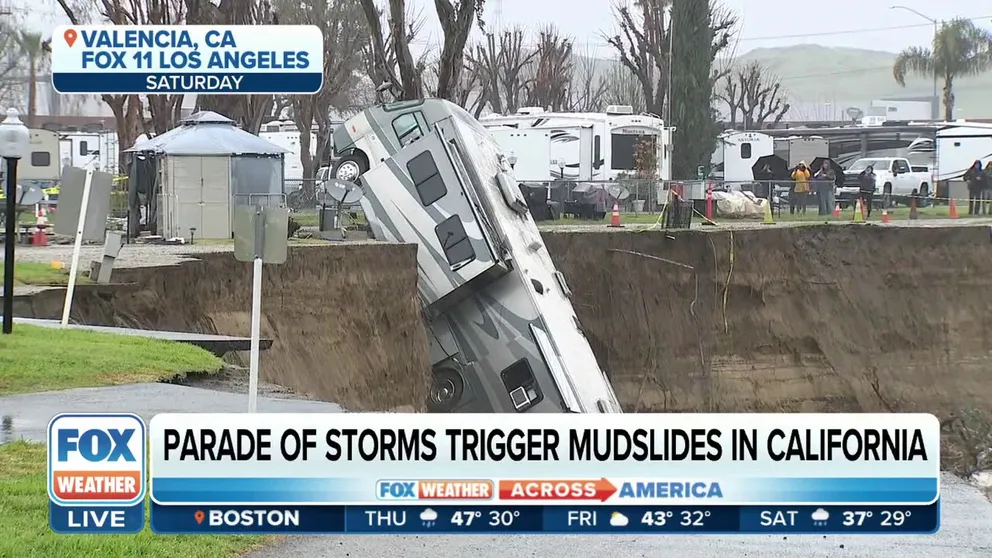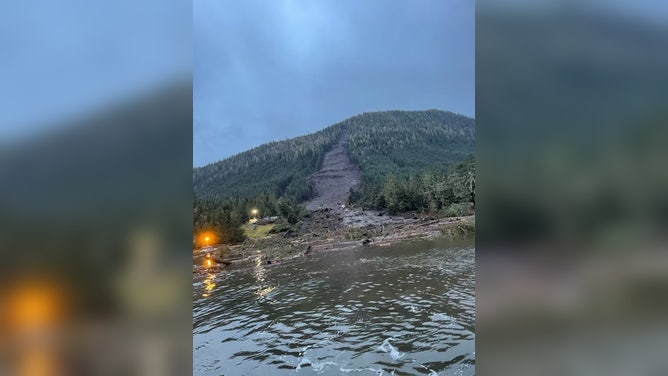What is a landslide?
It’s estimated that landslides and debris flows result in 25 to 50 deaths each year in the United States. Slopes and areas burned by wildfires are considered to be more vulnerable to landslides and debris flows.
What sets the stage for landslides in California?
FILE VIDEO: U.S. Geological Survey Landslide Hazards Program Research Hydrologist Matthew Thomas provides insight on FOX Weather.
A landslide is an event when a mass of rocks, vegetation or other debris moves down a slope in an uncontrollable fashion and can lead to additional hazards.
Landslides are common in mountainous areas and can be triggered by rainfall, droughts, earthquakes, or volcanic eruptions.
According to the Centers for Disease Control and Prevention, landslides and debris flows result in 25 to 50 deaths a year, as there are no real warnings ahead of when the land can give way.
"Although the physical causes of many landslides cannot be removed, geologic investigations, good engineering practices, and effective enforcement of land-use management regulations can reduce landslide hazards. It is also important to understand the science of landslides – their causes, movement characteristics, soil properties, the geology associated with them, and where they are likely to occur," the U.S. Geological Survey stated.
LANDSLIDE DESTROYS CALIFORNIA HOMES AS SIGNIFICANT GROUND MOVEMENT THREATS CONTINUE
Recent landslides have destroyed homes in California and Alaska, with many coming without significant warning.
Geological experts said the region has many young mountain ranges, and loose soil and debris can lead to landslide events.
Growing cracks, sudden changes in water levels or groaning produced by the terrain are all considered to be warning signs that a landslide event could be underway.
7 THINGS TO KNOW ABOUT MUDSLIDES
Landslides can be referred to as rockfalls, lateral spreads, debris flows, or even mudslides, and their classification typically depends on the movement of particles in the event.
Direct losses due to landslides exceed $2 billion annually, according to the Washington State Department of Natural Resources.





